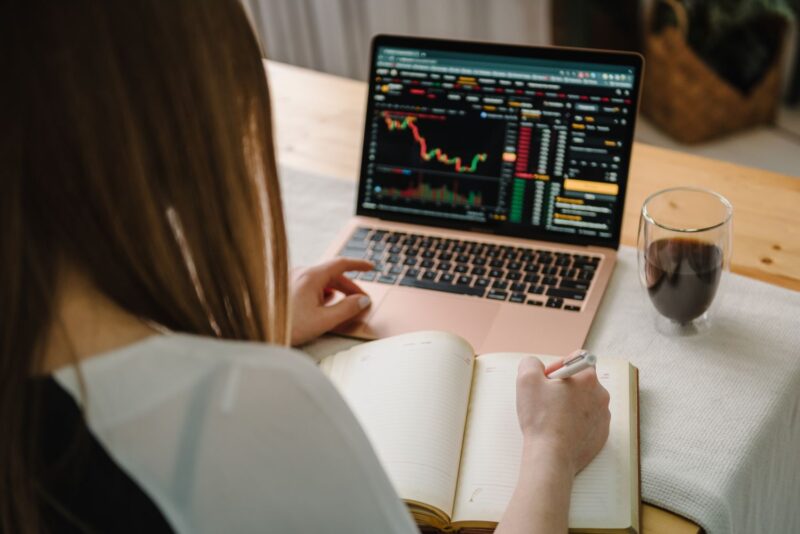Thinking about stepping into the wild, rewarding world of trading? The thrill of the trade, the potential for profits, the adrenaline of fast-paced decision-making—trading can feel like a financial rollercoaster, but one that requires more than just a fearless attitude. Before taking the plunge, it’s crucial to know what you’re signing up for, so here are some rock-solid essentials to help you start right.
Key Points
- Get comfortable with a trading platform you trust.
- Avoid placing all your money in one trade.
- Educate yourself on different strategies.
- Be prepared for both wins and losses.
- Start small and be patient.
1. Choosing Your Platform Wisely

Your trading platform is your gateway to the market, and it can shape your experience in a big way. Choose one that fits your needs as a beginner. For instance, Binomo is an accessible option, especially for those who want to start with a modest budget. Binomo offers real accounts starting from just $10, which means you don’t need a big bankroll to get started. Plus, you can begin with trades as small as $1—ideal for building confidence and honing skills without taking on too much risk.
2. Learn Basic Terminology and Tools
No need to be fluent in finance lingo from day one, but it’s essential to know the basics. Get familiar with terms like “leverage,” “volatility,” “pips,” and “spread.” Understanding these will help you interpret market trends and manage trades effectively. A solid grasp of terminology also means you won’t be caught off-guard by the terminology traders throw around.
| Term | Definition |
| Leverage | Borrowing capital to increase returns |
| Volatility | Speed at which price changes occur |
| Pips | Unit of measurement for price movement |
| Spread | Difference between bid and ask prices |
3. Start with a Demo Account

Why put your hard-earned cash on the line when you can learn the ropes for free? Most platforms offer demo accounts that mimic real-time market conditions, allowing you to practice without the fear of losing money. Experiment with different strategies, test various asset classes, and get a feel for your platform without any financial consequences. A demo account is one of the best, risk-free ways to improve your trading skills.
4. Never Bet the Farm on One Trade
Putting all your capital into a single trade is like playing roulette. Even seasoned traders avoid this move. Spread your money across different trades, as it’s a simple way to avoid losing everything in one fell swoop. Diversify to manage your risk and stay financially stable in the long run. Remember, small, consistent profits add up faster than one big, risky bet.
5. Keep Emotions in Check
Emotions can cloud judgment and lead to impulsive decisions. FOMO (Fear of Missing Out) and frustration can steer you away from logic. Avoid emotional highs and lows. Instead, rely on a consistent strategy and stick to it, regardless of the daily ups and downs.
6. Have a Game Plan: Strategy Is Key

Every successful trader has a strategy that guides their decisions. Whether it’s day trading, swing trading, or a longer-term approach, choose a strategy that matches your goals and risk tolerance. Some strategies might suit you better as a beginner, like the “trend-following” strategy, where you buy and sell in line with the overall market direction.
7. Recognize the Risks
Trading is not a guaranteed money-maker. Losses happen to everyone, even professionals, so be prepared. Set a loss limit—a point where you stop to avoid further loss—and never ignore it. Managing your risk will keep you from making emotional decisions when things don’t go as planned.
8. Study and Follow the Market
Markets have their rhythms and cycles. Spend time observing how the market behaves, what factors influence price changes, and which external events (like economic reports) affect the market. Following financial news, market updates, and reputable analysts will give you insights that go beyond chart analysis.
9. Manage Your Money Like a Pro

Money management separates casual traders from successful ones. Allocate your funds wisely and avoid investing more than you can afford to lose. Stick to a budget and keep a close eye on your profits and losses. Discipline with money management builds long-term success and prevents you from diving into trades that could lead to significant losses.
FAQ
1. Do I need a lot of money to start trading?
No, you can start with a small amount, with as little as $10, and you can even place trades starting at $1.
2. Can I make a living by trading right away?
Making a living from trading is a journey. It requires practice, patience, and experience, so don’t expect instant results.
3. Do I need to quit my job to trade?
Not at all. Many people trade part-time, balancing it with their regular jobs.
4. How do I know when to sell or buy?
Look at market indicators, trends, and your strategy. There’s no perfect moment, but practice helps you get better at timing.
5. What if I lose money?
Losses happen to everyone. Stick to a strategy, set limits on losses, and don’t let emotions take over.
Trading may seem complex at first, but with a bit of effort, the right platform, and patience, you’ll be able to navigate it with confidence. Start small, stay disciplined, and keep learning. Now, get out there and make your mark in the world of trading!


